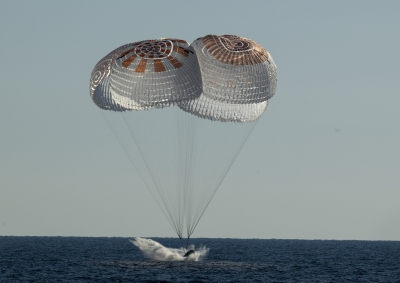Washington: NASA’s SpaceX Crew-4 astronauts aboard the Dragon spacecraft safely splashed down off the coast of Jacksonville, Florida, early on Saturday, completing the agency’s fourth commercial crew mission to the International Space Station.
The international crew of four NASA astronauts Bob Hines, Kjell Lindgren, and Jessica Watkins and ESA (European Space Agency) astronaut Samantha Cristoforetti spent 170 days in orbit.
Teams aboard SpaceX recovery vessels retrieved the spacecraft and astronauts.
After returning to shore, all astronauts will fly to NASA’s Johnson Space Center in Houston. Cristoforetti then will board a plane to Europe.
“Welcome home Crew-4! This international crew has spent nearly six months on the International Space Station conducting science for the benefit of all. Their work aboard the orbiting laboratory will help prepare future explorers for future space missions,” NASA Administrator Bill Nelson said in a statement.
The Crew-4 mission was launched on April 27 on a Falcon 9 rocket from NASA’s Kennedy Space Center in Florida.
Hines, Lindgren, Watkins, and Cristoforetti traveled 72,168,935 miles during their mission, spent 170 days aboard the space station, and completed 2,720 orbits around Earth.
Throughout their mission, the Crew-4 astronauts contributed to a host of science and maintenance activities and technology demonstrations.
Cristoforetti completed two spacewalks with Roscosmos cosmonaut Oleg Artemyev to perform station maintenance and upgrades.
They continued work on investigations documenting how improvements to the space diet affect immune function and the gut microbiome, determining the effect of fuel temperature on the flammability of a material, exploring possible adverse effects on astronaut hearing from equipment noise and microgravity, and studying whether additives increase or decrease the stability of emulsions.
The astronauts also investigated microgravity-induced changes in the human immune system similar to ageing, tested a novel water-reclamation membrane, and examined a concrete alternative made with a material found in lunar and Martian dust.






































